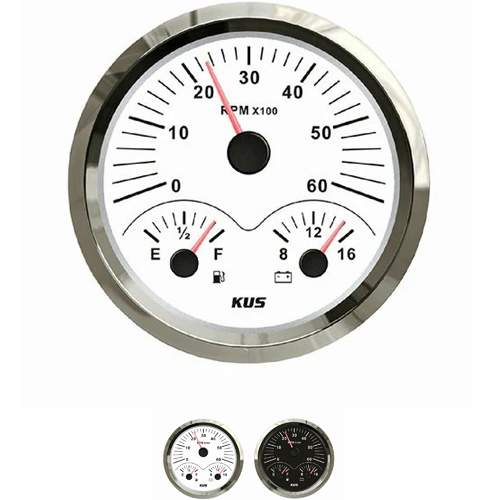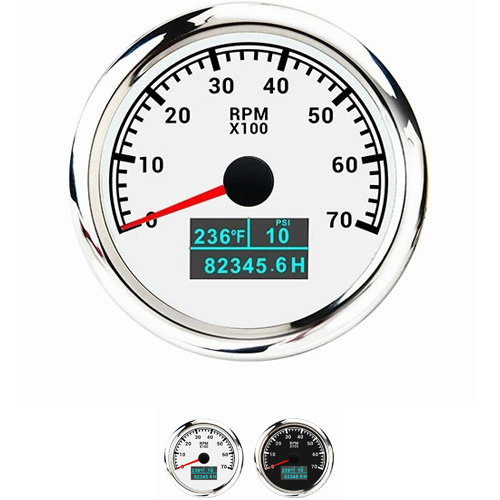marine gauge kit
There are many instruments gauge kit for outboard marine engines, including tachometer, oil level gauge, etc. What is the operating speed of the outboard engine? Is the crankshaft speed, generally 4500-5500 rpm. Wiring method of marine tachometer x100r/min. The wiring method of marine tachometer x100r/min should add a DC motor on the main shaft of the engine (such as beside the generator). Then measure its voltage and calibrate the corresponding value with a tachometer.
For motorcycles, the wiring is very simple, with only four leads: red, black, yellow and green.
1. The red line is the power line of the tachometer. Because the clock of the tachometer needs to work continuously, the red line must always be powered and can be connected behind the power fuse.
2. The black wire, the ground wire of the tachometer, can be connected to any ground wire.
3. The yellow line is the working line of the tachometer. After the yellow line is powered on, all parts of the tachometer start to work, and the lamp on the panel lights up. The yellow line is connected to the power line behind the ignition key switch. After the key switch is turned on, the tachometer starts to work.
4. The green wire, the signal wire of the tachometer, is connected to the trigger signal terminal of the igniter. The distance of an engine piston from one limit position to another is called a stroke. Also called journey. The length of the stroke has a direct relationship with the piston speed of the engine.
Where is the oil dipstick of the stroke outboard engine? First find the position of the oil dipstick. The oil dipstick is usually beside the engine, some on the top and some on the side. The dipstick has an obvious feature, that is, it has a hand pull ring, so it is easy to identify. Pull out the oil dipstick. Attention: check the oil quantity. It must be cool. If the ship has just returned or the engine is running, it is useless to check this. Clean oil stains. After pulling out the ruler for the first time, wipe it with a clean paper towel, and then insert it. The second time you pull out the oil dipstick, you can see the oil level on the dipstick. If the oil quantity is between the upper limit and the lower limit, the oil quantity is normal. The so-called upper limit and lower limit are generally marked, which can be clearly seen. That is the pockmarked area you said. If there is an oil level gauge, you can clearly know the oil level.
 English
English 



Get a Quote / Info